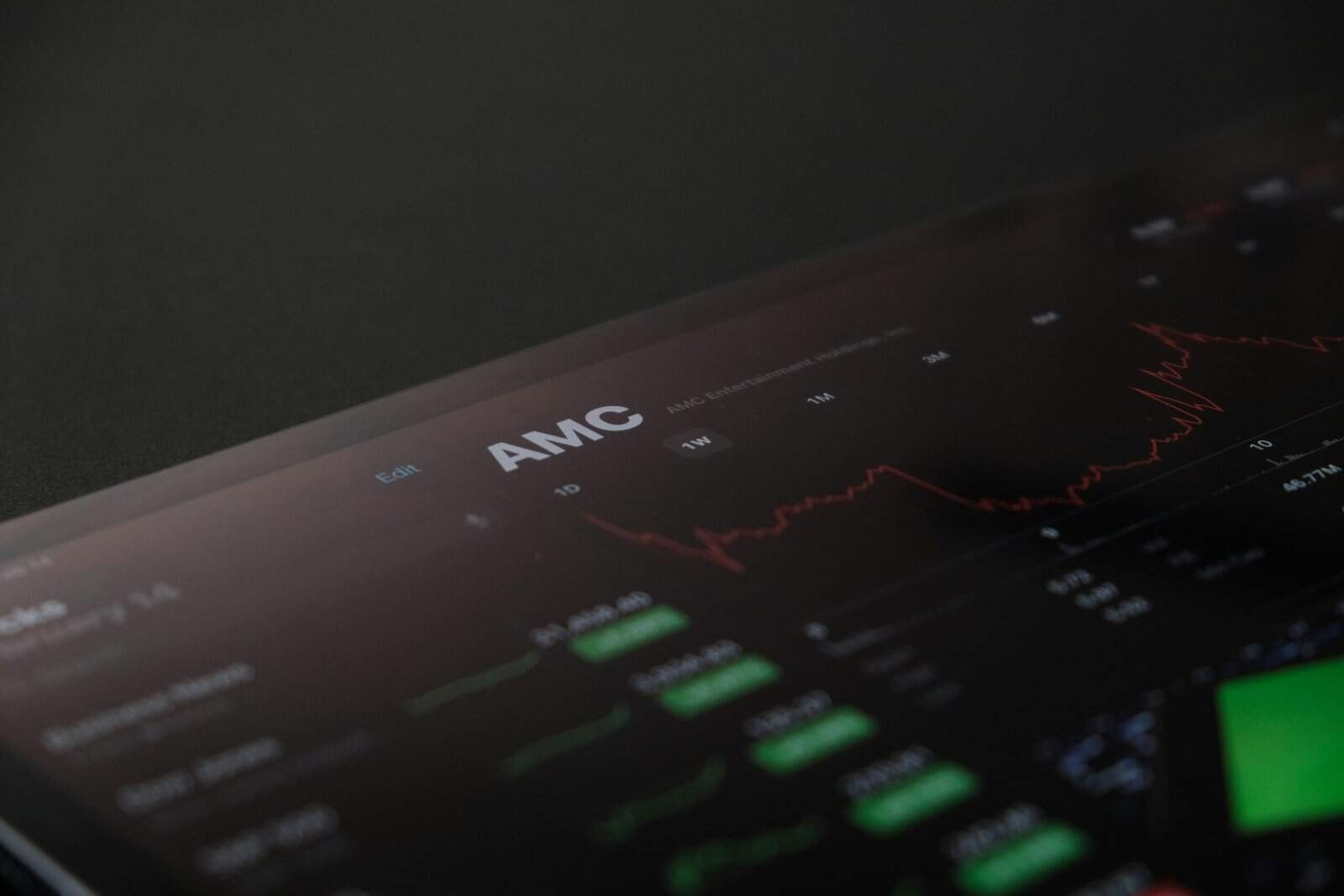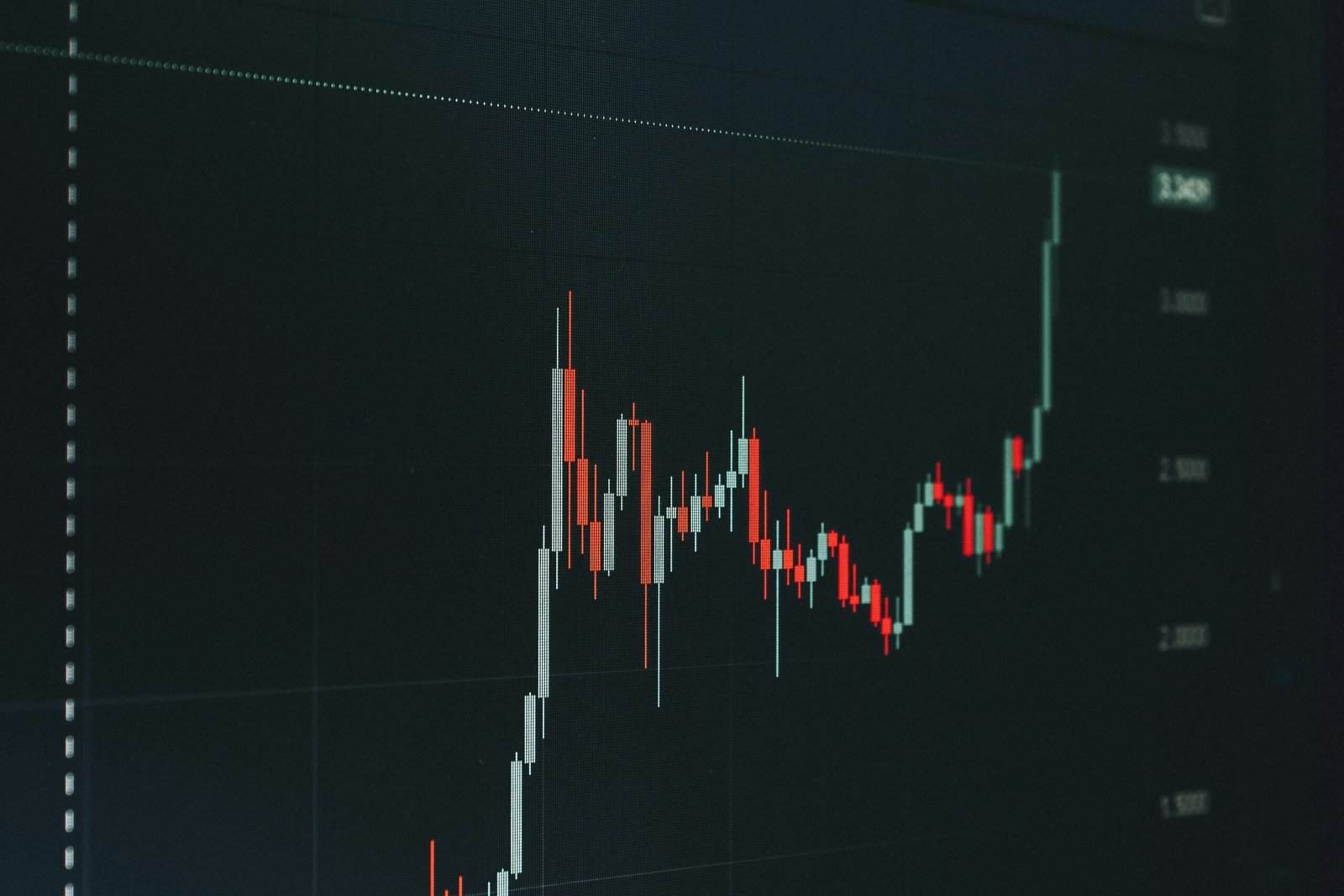? Are you deciding which exchanges will serve your API trading needs best in 2025?

Which Exchanges Are Best For API Trading In 2025?
You want a clear, practical picture so you can pick the exchange or mix of venues that match your strategy, compliance needs, and technical constraints. This guide walks through the criteria that matter, compares leading exchanges across categories, and offers hands‑on best practices for safe, reliable API trading in 2025.
What API trading means in 2025
API trading in 2025 is more institutional, more regulated, and more hybrid (on‑chain + off‑chain) than ever. You’ll see centralized exchanges offering richer institutional products, stronger custody integrations, and more predictable SLAs, while decentralized venues continue to grow for on‑chain strategies. Speed and reliability remain critical, but resilience, transparency, and compliance are increasingly decisive when you select an exchange.
Key criteria to evaluate exchanges for API trading
You should evaluate exchanges on multiple dimensions. Below are the main criteria and why they matter for your operational success.
Latency and throughput
Latency matters if you’re doing market making, HFT, or cross‑exchange arbitrage. You’ll want low round‑trip times, predictable response times, and high request throughput. Exchanges that offer co‑location or dedicated private links will give you the edge for latency‑sensitive strategies.
Market liquidity and depth
Liquidity impacts slippage and execution quality. For spot or futures strategies, you should look at average traded volume, order book depth at multiple levels, and the spread behavior during volatile periods.
Fee structure and maker/taker rebates
Fees influence profitability at scale. Evaluate taker fees, maker rebates, funding rates on perpetuals, and whether fee tiers are volume‑based or VIP/institutional negotiated. Consider hidden costs like withdrawal fees and funding spreads.
Order types and execution controls
Advanced order types (post‑only, IOC, FOK, stop‑limit, TWAP, iceberg) and execution controls (time in force, client order ID, order tagging) let you implement sophisticated algos and reduce manual reconciliation.
Market data quality and delivery methods
Real‑time market data should be available via websocket and optionally via low‑latency feeds or a market data TCP/UDP feed. Check sequence numbers, snapshot + incremental updates, and documentation for correct book reconstruction.
Rate limits, quotas, and fair‑use rules
Hard rate limits that aren’t matched with proper backoff can break your trading system. Look for generous limits, tiered limits for institutional customers, and clear guidelines on how they count requests.
Security and custody
API key management, two‑factor authentication, IP whitelisting, withdrawal whitelists, and hardware security modules (HSM) or institutional custody options matter for protecting your capital.
Regulatory status and jurisdiction
Jurisdiction affects availability, asset listings, and legal risk. If you operate in or have customers in the U.S., E.U., or other regulated markets, you need exchanges that comply with relevant rules and support required reporting.
Sandbox/testnet and developer support
A robust sandbox and thorough documentation let you test strategies safely. Look for example code, SDKs, client libraries, and an active developer community.
Co‑location and private connectivity
If you require the lowest latency, co‑location options or dedicated private connections (cross‑connects) are essential. These services usually come with pricing and contractual SLAs.
Customer support and SLAs
For important outages or account issues you want reliable support channels and clear SLAs. Institutional support lines, ticketing, and client success teams matter for mission‑critical trading.
Top exchanges by category in 2025
Below are exchanges that are widely considered strong choices in different categories. Characteristics and strengths are noted so you can match them to your needs.
Global spot + derivatives (large liquidity)
These venues generally provide extensive markets, deep liquidity, and mature APIs.
- Binance: Massive liquidity across spot and derivatives; rich API with REST, WebSocket, and enterprise options. Offers co‑location and institutional APIs, but availability and asset lists vary by jurisdiction.
- OKX: Strong derivatives offering, advanced order types, good API coverage and latency options. Institutional services available.
- Bybit: Popular derivatives exchange focused on futures and perpetuals, with strong websocket feeds and institutional integrations.
U.S. / regulated retail + institutional
If you need to operate under U.S. regulation or serve U.S. customers, these are common choices.
- Coinbase Advanced Trade / Coinbase Prime: Strong compliance posture, best‑in‑class custody for institutional clients, excellent documentation and sandbox, and Coinbase Prime for OTC and institutional services.
- Kraken: Good API coverage for spot and futures via Kraken Futures, strong security track record, and institutional offerings like Kraken Prime.
- Gemini: Institutional custody and compliance focus, APIs that support institutional workflows, though generally lower liquidity versus the largest global venues.
Europe‑focused and fiat gateways
These exchanges emphasize fiat on/off ramps and European regulatory alignment.
- Bitstamp: Long‑standing exchange with simple fee structure and stable APIs; good for fiat pairs and European customers.
- Bitfinex: Strong API options and advanced margin products; notable for liquidity in certain altcoin pairs.
Options and crypto derivatives specialists
If you trade options or volatility products, consider:
- Deribit: Leading exchange for crypto options and futures, widely used by professional options traders. Robust API with rapid market data and execution features tuned for derivatives strategies.
- LedgerX / Bakkt: For regulated U.S. options and futures products (availability and exact offering can vary by jurisdiction and 2025 developments).
Decentralized (on‑chain) venues and tooling
If your strategy requires on‑chain execution, these platforms and developer tools are key.
- Uniswap / SushiSwap / other DEXs: On‑chain AMMs accessed via RPC providers; useful for arbitrage and on‑chain market making.
- The Graph, QuickNode, Alchemy: Indirectly relevant — these providers enhance your ability to gather on‑chain data and interact with DEXs programmatically.
Institutional prime brokers and OTC platforms
For block trades, netting, settlement, and prime custody, consider:
- Coinbase Prime: Custody + trading + prime services.
- FalconX, FalconEdge, Galaxy Digital (services vary): Offer prime brokerage and institutional execution with API access and credit lines.
- Bitgo, Anchorage: Custody partners integrated with trading workflows.

Comparative table — high level API features
| Exchange / Service | API types | Typical rate limits | Order types | Co‑location / Private links | Best for |
|---|---|---|---|---|---|
| Binance (Global) | REST, WebSocket, Market Data TCP | High (varies by tier) | Extensive (post‑only, IOC, FOK, stop) | Yes | High liquidity spot & futures |
| Coinbase Advanced / Prime | REST, WebSocket, FIX (institutional) | Medium (institution tiers) | Standard + advanced algos via Prime | Institutional links | U.S. compliance, custody |
| Kraken / Kraken Prime | REST, WebSocket | Medium | Spot/futures/margin | Yes (institutional) | Security + fiat support |
| Deribit | REST, WebSocket | High for options traders | Options, futures orders | No (but low latency) | Options professionals |
| Bybit | REST, WebSocket | High | Derivatives focused | Co‑location offered | Perpetual and futures traders |
| Uniswap (on‑chain) | RPC, subgraph | N/A (on chain) | Swap, liquidity ops | N/A | On‑chain arbitrage & AMM strategies |
Note: “Typical rate limits” and “co‑location” indicators are qualitative. Exact limits and connectivity options change with provider offerings and contractual arrangements.
How to choose the best exchange for your strategy
Match the exchange strengths to what your strategy requires. Here’s practical guidance by strategy type.
High‑frequency trading and market making
You should prioritize:
- Co‑location or private connectivity.
- Exchanges with low, predictable latency and high throughput.
- Generous maker/taker fees or rebates.
- RAW market data feeds (incremental order book updates) and FIX if available.
Good choices: Binance (where allowed), Bybit (for derivatives), dedicated institutional feeds.
Arbitrage (cross‑exchange)
You should prioritize:
- High liquidity to execute large legs without slippage.
- Fast withdrawal/transfer times for on‑chain or fiat settlement.
- Reliable order acknowledgements and easy reconciliation.
Good choices: Binance, OKX, Coinbase (for U.S. regulated arbitrage with fiat considerations).
Retail algorithmic trading (scalping, trend following)
You should prioritize:
- Ease of use in SDKs and documented APIs.
- Reliable sandbox and good error handling.
- Reasonable fees and fiat support if you need deposits/withdrawals.
Good choices: Kraken, Coinbase Advanced Trade, Bitstamp.
Institutional execution and crypto prime brokerage
You should prioritize:
- Custody integrations, credit facilities, and block trading desks.
- Detailed reporting, FIX support, and SLA agreements.
- Compliance and KYC/AML support.
Good choices: Coinbase Prime, FalconX, Kraken Prime.
Options and volatility trading
You should prioritize:
- Specialized options venues with tight option pricing models.
- APIs with Greeks, implied volatility, and order types specialized for options strategies.
Good choices: Deribit, LedgerX (depending on jurisdiction and product availability).
Decentralized (on‑chain) strategies
You should prioritize:
- Fast blockchain RPC providers and reliable mempool access.
- Efficient tooling for gas estimation, sandwich prevention, and MEV mitigation if relevant.
Good choices: Uniswap plus premium RPC providers (Alchemy, QuickNode), MEV protection services as needed.

Best practices for API trading
To operate reliably and avoid costly mistakes, follow these practices.
Use deterministic client order IDs and idempotency
Always set client‑side order IDs so you can safely retry without duplication. Many exchanges support idempotency keys or client_order_id fields; use them.
Time sync and sequence handling
Sync your servers to NTP and rely on sequence numbers from market data to reconstruct order books. Don’t assume messages arrive in order.
Respect rate limits and implement exponential backoff
Backoff strategies and request pacing prevent bans. Queue requests on the client side and use batching when possible.
Handle partial fills, cancellations, and rejections robustly
Design your order lifecycle state machine to handle partial fills, replace (modify) failures, and rejections safely. Reconcile order states frequently with exchange fills.
Secure API keys and rotate them regularly
Store API keys in secure vaults (HSMs or secret managers), restrict permissions (trading only vs withdrawals disabled), and rotate keys on a schedule.
Use IP whitelisting and withdrawal whitelists
Where available, restrict API access to fixed IP ranges and enable withdrawal whitelists to reduce theft risk.
Monitor latency, fill rates, and market anomalies
Set alerting on fill rate drops, abnormal latency, or mismatch between exchange book and aggregated market data.
Maintain robust logging and reconciliation
Log raw inbound/outbound messages, order events, and reconciliation reports. Reconcile daily (or hourly) to detect drift quickly.
Test on sandboxes and run canary strategies
Exercise canary trades and synthetic orders to detect API regressions or connectivity issues before deploying large capital.
Multi‑exchange strategies and orchestration
If you plan to trade across multiple exchanges, you should consolidate and abstract with a trading gateway. Consider:
- Unified adapters: Libraries like CCXT (for many REST APIs) or CCXT Pro (for websockets) speed development, but assess performance and coverage. For institutional throughput you may build dedicated adapters.
- Central risk manager: A single service to enforce global position limits, margin checks, and asset exposures before sending orders.
- Smart order router: Decide whether to route by best price, lowest impact, or liquidity depth. For large orders, split across venues to minimize slippage.
- Cross‑exchange reconciliation: Normalize fill reports, fees, and returned timestamps. Convert currencies where necessary to maintain consistent P&L.

Security and compliance considerations for 2025
Regulation and compliance will continue evolving. You should:
- Implement rigorous KYC/AML processes if you are offering trading services or aggregating for customers.
- Monitor sanctions lists and geographic restrictions; many exchanges block certain countries and IPs automatically.
- Ensure tax and reporting workflows are aligned with local rules; exchanges may provide reporting APIs or tax export tools.
- Consider custody rules and asset segregation needs: custodial versus non‑custodial flows affect risk and compliance.
Practical checklist before you commit to an exchange
Use this checklist as a final sanity check before onboarding funds or signing an institutional agreement.
- Does the exchange support your required markets (pairs, perpetuals, options)?
- Do they provide the API features and order types you depend on?
- Are rate limits, co‑location, and SLAs clearly documented and acceptable?
- Is liquidity sufficient for your average and peak order sizes?
- Is the exchange compliant in your jurisdiction and with your client base?
- Do you have custody and withdrawal controls you need?
- Can you test on sandbox/testnet and do you have time to run integration tests?
- Have you planned for failover (secondary exchange) and monitoring?
- Are fees and funding costs modeled into your strategy P&L?
- Is support responsive and suitable for your operational hours/worldtime?
Shortlist recommendations by user profile
These are concise pairings depending on what you prioritize.
- If you’re latency‑sensitive market making: Binance (global), Bybit, or colocated institutional feeds where available.
- If you require U.S. regulation and custody: Coinbase Advanced Trade / Coinbase Prime, Kraken.
- If you need options and advanced derivatives: Deribit (options), Derivatives desks at OKX or Bybit for perpetuals.
- If you need simple fiat rails in Europe: Bitstamp, Kraken.
- If you want on‑chain execution plus high throughput: Uniswap + premium RPCs and MEV protection tooling.
What to watch in 2025 and beyond
- Continued regulatory scrutiny in major markets may change where certain exchanges can operate and which products they can offer.
- Increased hybrid on‑chain/off‑chain products and atomic settlement primitives could shift some API patterns toward blockchain‑native models.
- Greater institutional adoption will push exchanges to offer clearer SLAs, dedicated support, and integrated custody solutions.
- Market data commercialization and private feeds will become more common for top liquidity venues.
Final recommendations
You should start by defining non‑negotiable requirements for your strategy: jurisdictions, required order types, latency tolerance, and custody rules. Shortlist 2–3 exchanges that meet those core constraints and run a pilot using sandboxes and small capital. Implement strict operational safeguards (rate limiting, idempotency, reconciliation) from day one. For robust strategies, maintain at least one backup venue and build cross‑exchange risk controls.
If you want, provide your strategy type (HFT, market making, arbitrage, options, retail algo) and your jurisdiction, and I can give a customized shortlist and a technical checklist tailored to your setup.
